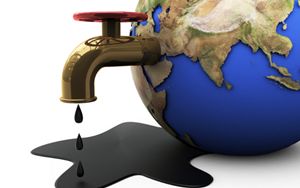(Finance) – The forecasts of cgrowth in oil demand of OPEC and the IEA for this year, but the International Energy Agency aanticipate a fort slowdown of the question in next five years, in response to rising prices and concerns about security of supply related to the global energy crisis. Indications that lead OPEC to continue with its strategy supply rationing.
OPEC confirms estimates for 2023
Despite the macroeconomic uncertainties, OPEC confirmed the growth forecasts of the doil demand for 2023reporting in the June report a increase of 2.35 million barrels per day (2.33 in the previous report) or del 2.3% to 101.91 MBG. The question, in particular, is expected in acceleration in the second half of the year, with a move to 102.03 MBG in the third quarter and 103.25 MBG in the fourth quarter. Estimates that are inevitably affected by the uncertainty that characterizes the macroeconomic scenario.
The growth of question in Chinadespite the post-Covid recovery, it should turn out to be quite modest and settle at 0.84 million barrels per day, equal to an increase of 5.7% in 2023.
There oil demand in OPEC share this year it is expected at 29.3 million barrels per dayor, an increase of about 900 thousand barrels compared to 2022, and compares with a level of production lower, equal to 28.07 million barrels per day in May. A figure that will not change OPEC’s strategy based on new production cuts.
The IEA expects a slowdown in demand between now and 2028
From the singing on the International Energy Agency, while confirming for this year a growth in global demand for 2.4 million barrelsprovides for a marked slowdown to 0.4 million in 2028due to the medium-long term effects of the energy crisis, which is accelerating the transition to cleaner energy sources such as renewables, hydrogen, biofuels instead of fossil fuels.
Despite this, one is expected cumulative demand growth of 6% between 2022 and 2028 to reach 105.7 MBG at the end of the period, due to higher demand from the petrochemical and aeronautical sectors, which will offset the progressive reduction of transport fuels after 2026 driven by the spread of electric vehicles.
“The shift to a clean energy economy is accelerating, with global oil demand expected to peak before the end of this decade, thanks to the advancement of electric vehicles, energy efficiency and other technologies,” he said Fatih Birolexecutive director of the IEA, adding “oil producers need to pay close attention to the increasing pace of change and calibrate their investment decisions to ensure an orderly transition.”
